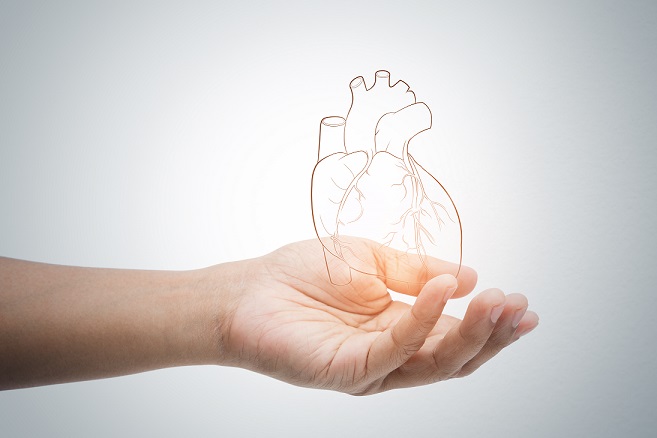Cardiac Care
Understanding Diabetes Cardiac Conditions

A patient with diabetes has four times higher risk of developing a heart problem compared to someone of the same age and sex without diabetes. At Dr. Mohan’s DSC a specialised unit has been set up to look after diabetes-related heart conditions. This unit has facilities for computerised ECG, echocardiography and cardiac stress testing with a computerised treadmill to diagnose conditions such as coronary artery disease and diabetic cardiomyopathy.
Diagnosis
Diabetes is a major contributing factor for heart disease. Individuals with diabetes are two to four times more likely to develop cardiovascular disease than adults without diabetes. The American Heart Association considers diabetes to be one of the seven major controllable risk factors for cardiovascular disease. Cardiovascular disease is considered to be the major cause of morbidity and mortality among individuals with diabetes. Individuals with diabetes have a higher risk of developing coronary artery disease (CAD), caused by a narrowing or blocking of the blood vessels that go to the heart, heart attack or stroke than individuals without diabetes. People with diabetes also tend to develop heart disease at an earlier age than those without diabetes. Some common risk factors shared by diabetes and heart disease are physical inactivity, unhealthy diet, obesity, high blood pressure and cholesterol, low birth weight, smoking and stress.
In individuals without diabetes, inadequate blood flow to the heart muscle may cause a variety of signs and symptoms, such as chest pain or pressure, pounding heartbeat, shortness of breath, jaw or arm pain, and sweating. However, none of these heart-related symptoms may be present in a person with diabetes. This type of heart ailment, known as ‘silent ischemia’, is a common feature among people with diabetes. The lack of symptoms may give one a false sense of good health and may prevent one from seeking medical care or treatment until serious complications have occurred. Regular screening and follow up visits with the diabetologist/physician can help one identify risk factors and heart problems before they worsen. Various tests can help assess heart function, such as an electrocardiogram (ECG). The early stages of CAD, which involves both functional and structural changes in the arteries, can be studied using sophisticated non-invasive techniques. These include carotid intimal medial thickness (IMT), endothelial dysfunction and arterial stiffness.

Treatments and Infrastructure
For more than 25 years, our patients have been treated with the highest level of cardiac care. We put our heart into caring for yours and measure our success by patient outcomes.
Our centre is served by the eminent cardiologist team of Dr. Premanand MD.DM (Interventional cardiologist) and Dr. Sundar.
- Our centres are equipped with
- Twelve channel Electrocardiogram
- Echocardiogram with colour Doppler and stress imaging facilities
- Treadmill testing with all necessary back up
- Ambulatory BP monitoring
A 24 hour well-equipped ICU care and Cardiac intervention tie-up with a higher cardiac centre are also available.
Frequently Asked Questions
- Sugar, honey, glucose, jam, jaggery, sweets, cakes.
- Dry fruits like dates, raisins, figs
- High calorie fruits like banana, mango, jack fruits, chikku, custard apple, grapes.
- Tender coconut water, soft drinks, beverages
- Bakery products
- Getting rid of trash, salt, and excess water in your body
- Keeping your body’s fluid balance in check
- Assisting with the regulation of your blood pressure
Eat the Right Carbs(carbohydrate) and high fibre foods Carbohydrates are an essential source of energy, fibre and micronutrients. Carbohydrates are present in
- cereals like rice, wheat, ragi, bread, pasta etc
- starchy vegetables like potatoes, yam colcasia
- fruits, sweets, sugar and dairy products
Foods that contain little or no carbohydrates include meats, poultry, fish, egg, non starchy vegetables and fats.Carbohydrates get converted into blood glucose quickly and thereby increase the blood glucose level. Therefore the quantity and quality of carbohydrate consumed is important. Hence it is essential to choose low carbohydrate foods .
It is better to prefer complex carbohydrates and high fiber foods like whole grains, whole pulses and non starchy vegetables as it delays digestion and helps for a better glycemic control.
Choose low glycemic index foods
Glycemic index(GI) is a value assigned to foods based on how slowly or how quickly a food raises the blood glucose levels. The GI is not related to whether the carbohydrate is simple or complex. The GI measures the rise in blood glucose levels caused by a measured quantity of a particular food. Carbohydrates in low GI foods gets metabolised slowly and cause a lower and slower rise in blood glucose levels. High GI foods are rapidly absorbed and cause a large rise in blood glucose levels. Examples of low, medium and high GI foods are as follows
- Low GI: Greens and Green leafy vegetables
- Moderate GI: Whole grains, Brown rice, Legumes, Dhals, Dr.Mohan’s Brown rice, Dr.Mohan’s High fibre rice etc
- High GI: White fully polished rice, Sugar, Jaggery, White bread, Maida etc
Follow a Healthy Diet
Diabetes control depends to a great extent on following the right/ healthy diet. Knowing what to eat and what not to eat is extremely important. Healthy diet helps to prevent wide fluctuations of blood glucose levels .Diabetic diet does not mean that one has to starve or have a bland diet. You can enjoy your favourite foods and take pleasure from meals without feeling hungry or deprived.To eat healthy
- Eat 4 meals (Breakfast, Lunch, Evening snack & Dinner) a day
- Eat at the same time every day
- Eat the right quantity of food
- Eat more vegetables
- Eat less fat and salt
The key point is that people with diabetes do not need a special food. Learn to watch on portion sizes and do not eat high calorie foods
Dietary fibre is a type of carbohydrate that is found in plant-based foods. It is not absorbed or digested by the body,but plays an important role in maintaining good health. There are two types of dietary fibre – soluble fibre and insoluble fibre
- Soluble fibre- found in fruits and vegetables
- Insoluble fibre- found is whole grains and whole pulses.
- Fibre is not digested or absorbed like other starches, it slows the absorption of sugar and has less of an effect on increasing blood glucose levels
- Fibre helps to improve insulin sensitivity
- Foods high in soluble fibre plays a major role in reducing blood cholesterol and low-density lipoprotein, or “bad,” cholesterol levels
- Having diabetes can increase the risk of cardiovascular disease. Evidence shows that increasing the intake of fibre, especially whole grains help to reduce the risk of cardio-metabolic diseases (this includes cardiovascular disease, insulin resistance and obesity) and colo-rectal cancer
- Dietary fibre absorbs fluid and increases the bulk of waste matter, making the stools softer and easier to pass
- Increasing dietary fibre also helps to promote weight loss and maintenance.High-fibre foods tend to be more filling than low-fiber foods. A high-fiber food tends to take longer time to eat and to be less “energy dense,” which means the calories are less for the same volume of food.
It prevents blood sugar fluctuations
Individuals with diabetes may be on tablets or insulin or both. Hence it is essential to follow a 4 meal pattern to prevent wide fluctuations of blood glucose. This will also help in reducing the next meal portion
Small frequent meals help to control the portion size of each meal. On contrary if any of these meals are missed or skipped it increases the appetite and leads one to consume a large portion size for the following meal
Fill half of your plate with vegetables and greens, one fourth with whole grams and pulses (if non-vegetarian pulses & non-vegetarian food) and the remaining one fourth with cereals (whole grains) like unpolished/minimally polished rice, Dr.Mohan’s brown rice, high fibre rice or wheat. Watch your portion sizes.
- Follow the medicines as suggested by your Diabetologist
- Do not stop insulin or try any alternative treatment
- Self-monitor your blood glucose levels
- Have a periodic review and keep adjusting your insulin
- Follow the diet as suggested by your Dietitian
- Do not restrict your physical activity
- Do not look this as a social stigma. Sharing experiences is a powerful way to learn to manage diabetes hence talk to other persons with a similar disorder. The diabetes care team is there to help meet all your medical needs and support
- You spend almost 35 hours per week at your school, so managing diabetes at school is very important.Fluctuations of blood sugars can affect the ability to learn. Hence it IS important that school staffs are educated, equipped and available to support the child
Many schools have little experience caring for a student with diabetes and may not know what is involved in diabetes management. It will take some time for the school to get used to caring for your child, just as it took some time for the child’s parents and the child as well.Talk to the school administrators and all staff members about what diabetes means for the child.Make sure the child always has everything required to manage diabetes at school.
- Healthy snack
- Glucose tablets
- 2 juice boxes (up to 15g of carbohydrates)
- Share helpful information about diabetes with school personnel.
- Link the school to a diabetes educator who can help to train and educate teachers and other school personnel about diabetes.
- Discuss the Diabetes Medical Management Plan provided by your child’s health care provider and work together to develop a plan for school including:
- Blood glucose checks
- Insulin administration
- Snacks and meals
- Emergency situations or when glucagon is needed
- Describe the child’s usual symptoms of hypoglycemia and hyperglycemia. Provide updated phone numbers. Develop a plan for when you should be called.
- Talk about what to do in an emergency. Make sure a trained school staff member know when and how to manage hypoglycemia.
- Provide diabetes management materials and equipment that should be kept at school.
- Work together with friends and school administrators to gather and distribute training information
